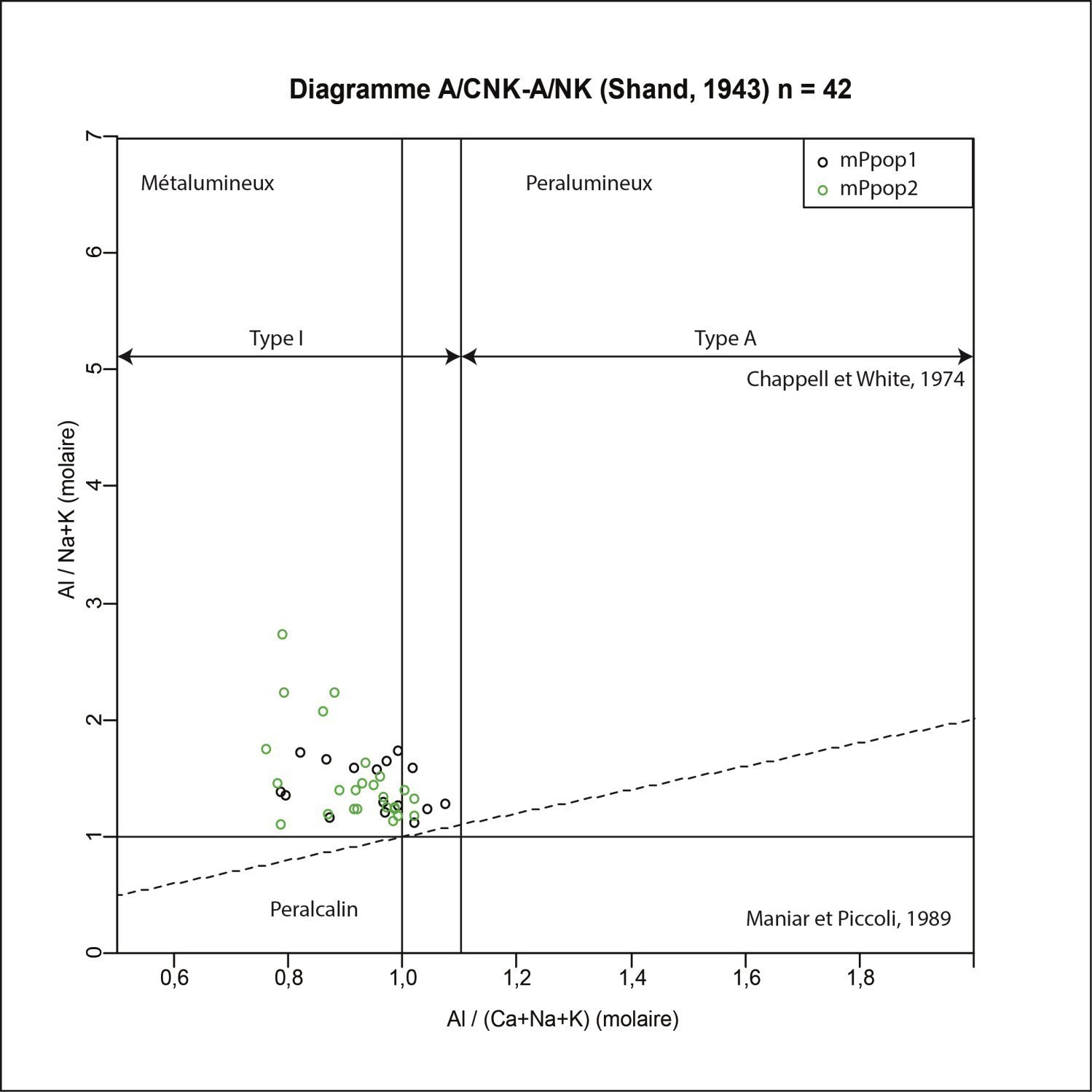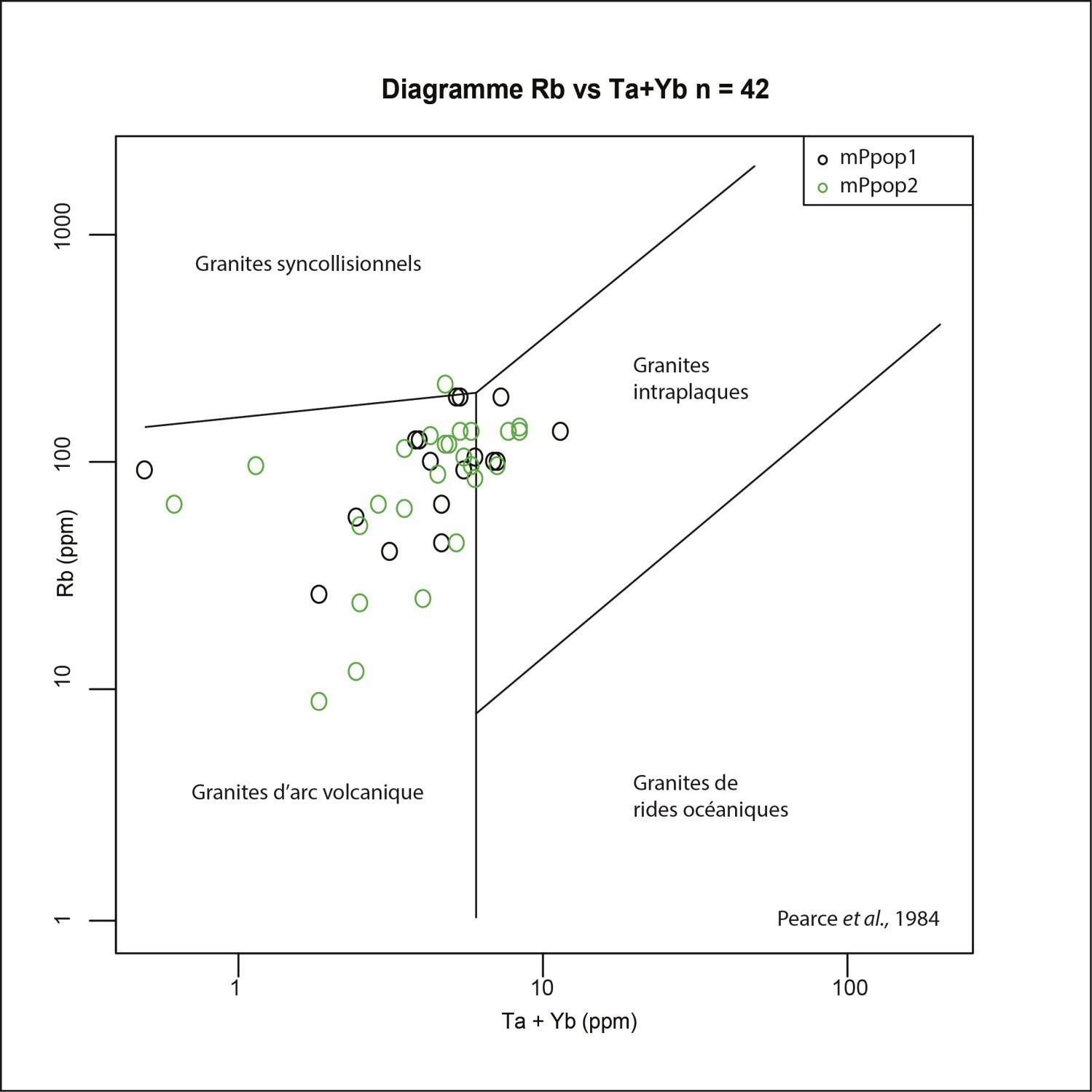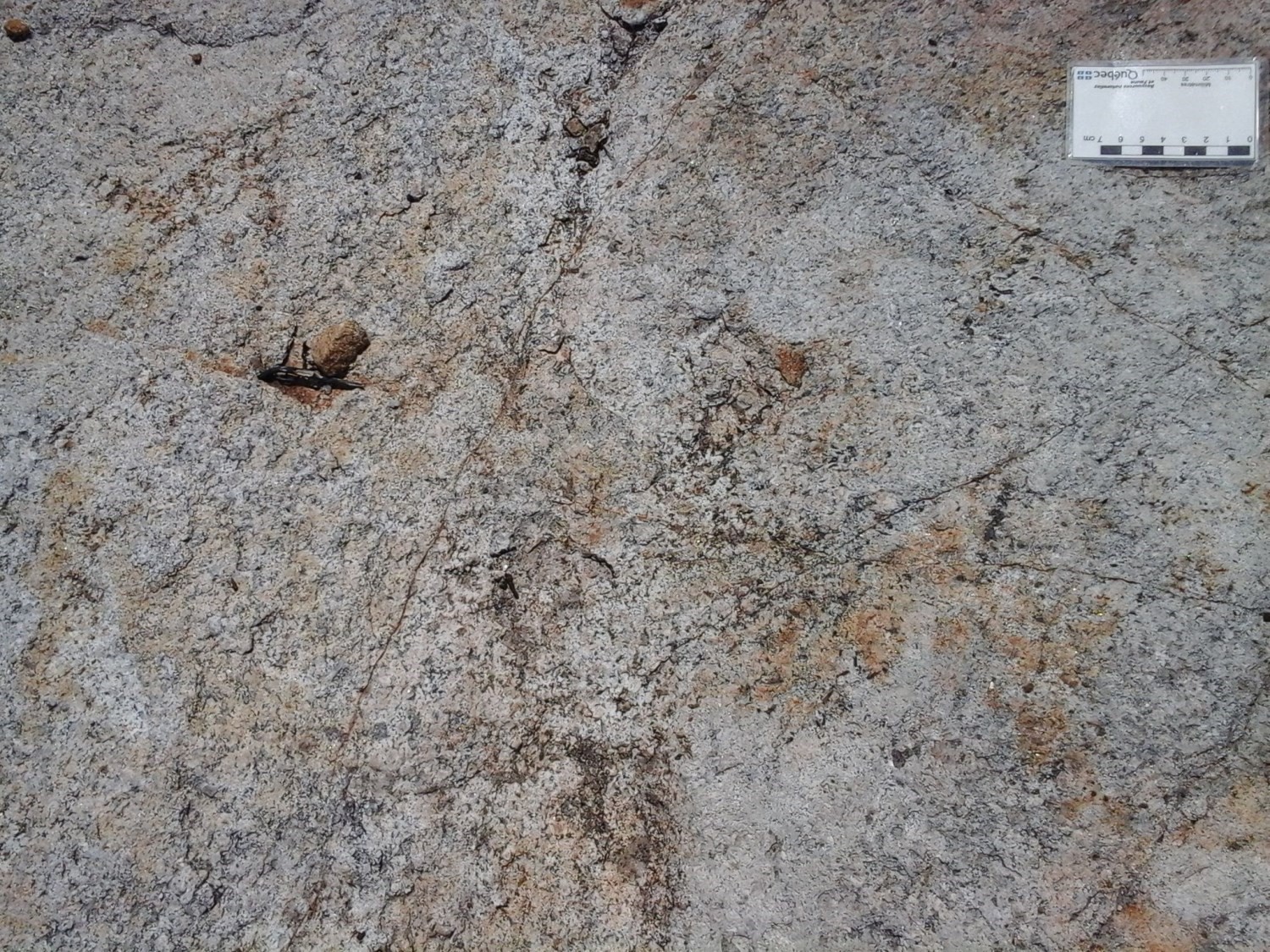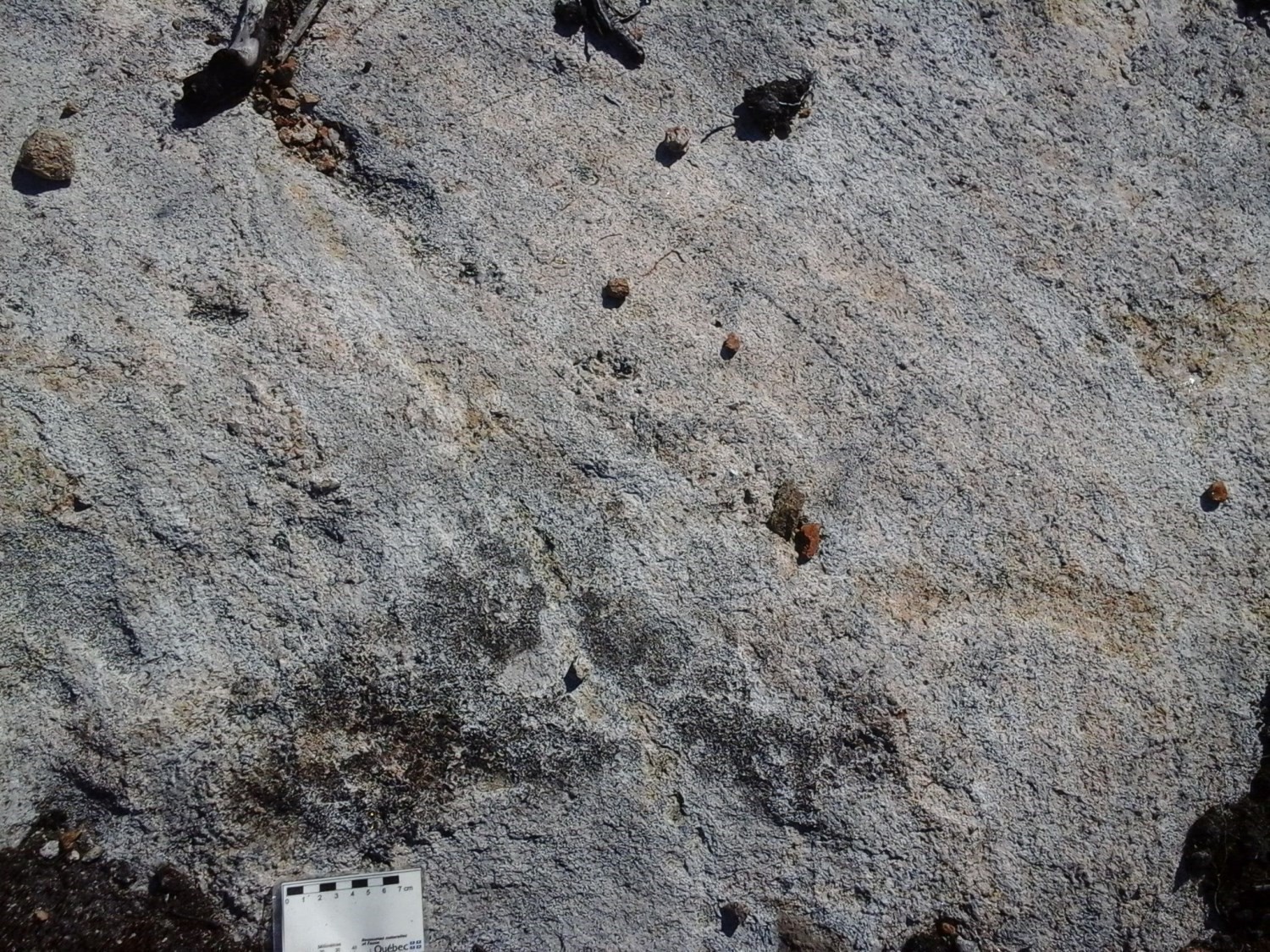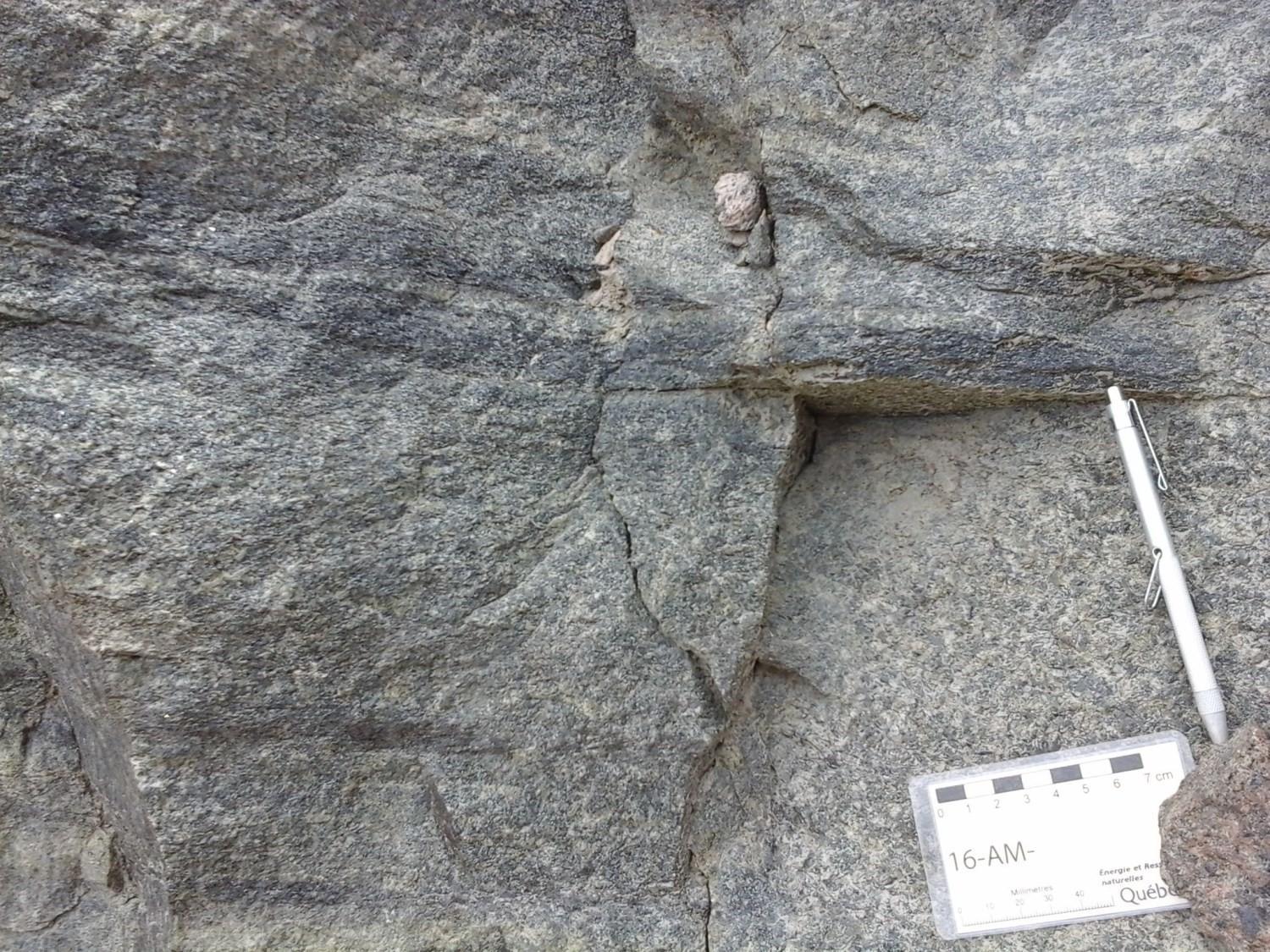
Last modified:
Translation of original French
| Author: | Moukhsil and Côté, 2017 |
| Age: | Mesoproterozoic |
| Reference section: | Charnockite outcrop (16-GC-1049) |
| Type area: | NTS sheet 31P11 |
| Geological province: | Grenville |
| Geological subdivision: | Allochton |
| Lithology: | Plutonic charnockitic rocks, usually metamorphosed, cut by granitic pegmatitic dykes |
| Type: | Lithodemic |
| Rank: | Suite |
| Status: | Formal |
| Use: | Active |
None
Background
The Pope Intrusive Suite was defined during the work of Moukhsil and Côté (2017) in the Wemotaci area, Haut-Saint-Maurice.
Description
The Pope Plutonic Suite is an important part of the Wemotaci area, which it seems to be the basement of. It is easily recognizable on aeromagnetic maps. Rocks of this unit are of varying composition with SiO2 contents ranging from 48 to 76%. They are mainly metaluminous (Maniar and Piccoli, 1989) and are similar to type I granitoids (igneous type, Chappell and White, 1974). Analyses overlap fields of volcanic arc granites and intraplate granites (Pearce et al., 1984). The Pope Plutonic Suite is subdivided into two units: mPpop1 and mPpop2.
Pope Plutonic Suite 1 (mPpop1): Charnockite and Granite with Minor Amounts of Mangerite, Enderbite, Granitic Gneiss, Monzodiorite and Quartz Monzodiorite
Unit mPpop1 mainly consists of medium to coarse-grained charnockite. The rock contains plagioclase, quartz, K-feldspar, orthopyroxene, green hornblende and biotite. Accessory minerals are also present (apatite, zircon, titanite, magnetite).
Granite is greyish, medium grained, foliated, and contains less than 2% biotite and green hornblende. The main minerals are quartz, plagioclase and K-feldspar. Large quartz zones have undulatory extinction. Plagioclase crystals are broken and usually show polysynthetic twinning. K-feldspar isolated crystals are locally perthitic. Acessory minerals are orthopyroxene, zircon, apatite, magnetite and pyrite.
Mangerite (orthopyroxene monzonite) is medium grained and foliated. It contains feldspar, magmatic orthopyroxene, biotite, magnetite, clinopyroxene, and isolated crystals of amphibole. Amphibole is locally observed in association with orthopyroxene, suggesting retrograde metamorphism. Millimetric myrmekites (<1%) of vermiculate quartz and feldspar are present. K-feldspar is perthitic. Zircon, opaque phases and apatite are accessory minerals.
Enderbite (orthopyroxene tonalite) is composed of plagioclase, quartz, orthopyroxene, green hornblende, biotite, magnetite and trace K-feldspar and garnet. It shows strong solid-state deformation, which includes stretching of quartz.
Granitic gneiss is composed of plagioclase, perthitic K-feldspar, quartz, green hornblende with zircon and apatite as accessory minerals.
Monzodiorite and quartz monzodiorite are coarse-grained rocks with preserved magmatic textures. They are composed of polysynthetic-twinned plagioclase laths, quartz (5-20%), brownish biotite, clinopyroxene with reddish to brownish exsolutions (biotite?) and trace K-feldspar. Orthopyroxene, zircon and ilmenite are present in small amounts.
Pope Plutonic Suite 2 (mPpop2): Granite, Charnockite, Granitic Gneiss, Mangerite with Minor Amounts of Quartz Monzodiorite, Monzonite, Enderbite and K-Feldspar Granite
Granites, mangerites, inderbites and monzodiorites of units mPpop2 and mPpop1 generally have the same composition. However, unit mPpop2 facies are distinguished by a strong magnetic susceptibility that is clearly visible on aeromagnetic maps. Medium-grained granite contains K-feldspar with tartan twinning typical of microcline, sericitized plagioclase, biotite and quartz with undulatory extinction.
Thickness and Distribution
The Pope Plutonic Suite is the largest area unit in the Wemotaci area. It extends north and west of this region.
Dating
None.
Stratigraphic Relationship(s)
Unit mPpop2 occupies the central part of the Pope Plutonic Suite, which suggests that it constitutes the youngest unit. The suite is intruded by the Wemotaci Intrusive Suite, the Rhéaume Intrusive Suite, the Toad Intrusive Suite, Veillette Intrusive Suite, the Laroche Intrusive Suite and the Roc Suite. It also contains kilometric klippes of the Wabash Complex.
Paleontology
Does not apply.
References
| Author(s) | Title | Year of Publication | Hyperlink (EXAMINE or Other) |
|---|---|---|---|
| MOUKHSIL, A. – CÔTÉ, G. | Géologie de la région de Wemotaci, Haut-Saint-Maurice (partie ouest du Grenville). Ministère de l’Énergie et des Ressources naturelles, Québec, 44 pages, 2 maps. | 2017 | RG 2017-03 |


